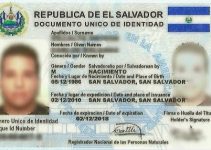The 100-hour war, also known as the soccer war, was a conflict that happened from the 14 to the 18 of July 1969 between El Salvador and Honduras. He is known by those names because it lasted 100 hours and coincided with football matches of the qualifying rounds of the World Cup of 1970, where El Salvador ranked defeating Honduras.
Although constantly known by the Nom de guerre of football, a term given by the Polish reporter Ryszard Kapuściński, the truth is that both Nations had their differences since the beginning of the century due to migration of Salvadoran peasants to Honduran land.
Causes
El Salvador, the smallest country in Central America, faced a problem of population density, while Honduras, with a vast territory, it offered many employment opportunities, so it became a place where Salvadorans could emigrate.
It is believed that the main cause of the 100-hour war was when Honduras decided to redistribute the land to Honduran peasants, for which drove out the Salvadoran peasants who had lived there for several generations. This generated a persecution of Salvadorians in Honduras and a massive return of peasants at El Salvador.
Other events which also influenced was the capture of 45 Salvadorean soldiers with two truckloads of weapons (supposedly intended to support a movement contrary to Osvaldo López Arellano, President of Honduras) in 1967.
The war
On July 14, 1969, a platoon of the Honduran army strafed the military garrison “Poy” in Chalatenago border, and thus (more numerous than the Honduran) Salvadoran army launched an attack against Honduras soil and its aviation bombed the airport of Toncontin in Tegucigalpa, immobilizing the 80% of the Honduran air fleet. Won the Dominion of the heavens, the Salvadoran army advanced into territory of Honduras (with more troops and better equipped), invading the town of Nuevo Ocotepeque, and penetrating up to eight km further than the border for the afternoon of July 15, dangerously approaching the own Tegucigalpa. The next day Honduran troops launched a counteroffensive, but without success, although its aviation managed to disrupt the supply chain and logistics of their enemies.
Consequences
- Between 4,000 and 6,000 civilians were killed, and more than 15,000 injured, including civilians and military.
- Between 60,000 and 130,000 of 300,000 undocumented Salvadorans living in Honduras were forced to return to their country.
- The end of regional commercial integration effort known as the Central American common market, designed by the United States.
- The reinforcement of the political role of the military in both countries. In El Salvador in the legislative elections that followed, most of the party candidates of conciliation Nacional (PCN) of El Salvador, on that date in the Government, from the army, became a huge apology for its role in the conflict and, therefore, were victorious in the election of Deputies and mayors.
- The worsening of the social situation in El Salvador, product of the deportations from Honduras, since the Government had to facilitate these people the economic reintegration, which failed to properly satisfy. This increased social pressure that led to the civil war that would later live for El Salvador.
Soccer
On June 6, 1969, in Tegucigalpa, Honduras defeated one by zero to El Salvador. June 15, 1969, in San Salvador, El Salvador defeated three zero to Honduras, which forced to play an extra meeting to break the tie.
The tiebreaker was played on June 27, 1969, in Mexico, where El Salvador beat Honduras 3-2 and this would classify at their first World Cup.
The end of the conflict
The Organization of American States negotiated a cease fire on the night of July 18 which came into force on 20 July and this would end the war in 100 hours. The Salvadoran Government demanded to cease the persecution of their fellow citizens, but the OAS demanded before evicting Honduran soil. The Salvadoran troops withdrew in early August.
The two Nations signed the General Peace Treaty in Lima (Peru) on October 30, 1980, by which the border dispute would be resolved in the International Court of Justice. This gave way to the negotiated solution of the border dispute for control of about 450 square kilometers, known as the pockets, which became part of Honduran territory since 1992, to the detriment of Salvadoran territory.




